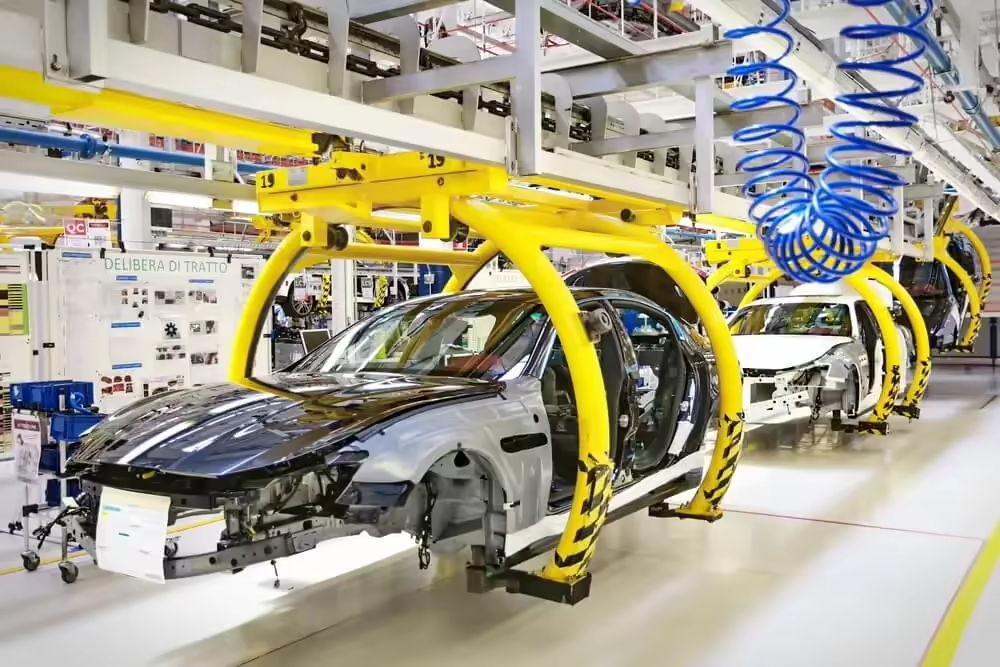Automotive manufacturing blends cutting-edge technology with legacy systems that resist change. As new production demands emerge, many plants hit hidden bottlenecks that drag down upgrades, inflate costs, and slow the race to stay competitive. True modernization isn’t just about installing new machines — it’s about clearing the structural obstacles standing in the way.
Power distribution is one of the biggest hidden barriers. Plants built around hardwired systems face major challenges when adapting production layouts. Small changes often trigger massive rewiring, long downtimes, and unexpected expenses. Upgrading to a flexible electrical busway system changes the game, offering a fast, modular way to reposition power sources without major disruptions.
Power Distribution That Can’t Keep Up With Layout Changes
Many plants still rely on rigid power systems that cause problems when equipment needs to move. Traditional hardwired setups can turn small changes into major headaches, often requiring a full rewiring. This disrupts production and leads to costs for permits and long downtimes, hitting profits hard. As plants aim to be more flexible, these outdated systems hold them back.
Modern electrical busway systems offer a better way. They let machinery move without the heavy work of rewiring, saving time and money. Some systems even allow for tool-free plug-in units that can be repositioned in minutes. This approach makes layout changes easier, helping operations flow better.
Mechanical Infrastructure That Assumes Processes Won’t Change
Mechanical layouts often get locked into old ways of working, built around outdated processes that resist change. When plants try to upgrade to new drivetrains or production methods, these static designs cause problems. Redesigns take time and cost a lot, throwing production schedules off and making transitions messy.
Using flexible station designs makes upgrades easier. Modular workstations with adjustable mounts and universal connectors let teams switch tasks or product types fast. Stations can be rearranged without major work, helping production adapt to changing needs. This flexible setup keeps operations quick, responsive, and better aligned with the fast pace of today’s automotive world.
Workflow Disruptions Hidden in Utility Planning
Utility planning, like air lines and coolant loops, often misses future automation needs. Rigid coolant loops, for instance, can block where robotic arms should go, forcing last-minute rerouting. When new machines arrive, setups often don’t fit, causing delays. Old utility paths create bottlenecks, holding up installations and pushing production schedules back.
Simpler, more adaptable utility paths can help plants get ahead of these problems. Thinking ahead about where new equipment might go helps manufacturers lay out utilities that are easier to adjust. Taking a proactive look at utility planning helps keep workflow smooth and minimizes downtime when upgrades happen.
Engineering Schedules That Don’t Allow Parallel Progress
Upgrades often stall because engineering schedules aren't flexible enough. Mechanical and electrical teams end up waiting on each other, sometimes for days, because certain tasks like conduit routing or machine anchoring can't proceed until previous steps are finished. These delays kill productivity, waste time, cost money, and make it harder to meet fast-moving customer demands.
Modular systems offer a way out by letting different teams work at the same time. For instance, mechanical crews can begin installing base frames while electrical teams run power lines overhead. Overlapping their work speeds up projects and cuts down on wasted time. Shifting to this kind of planning could seriously improve how upgrades are handled, keeping production on track and on time.
Compliance Barriers That Pop Up Too Late
Equipment upgrades often spark unexpected compliance problems that stall projects at the worst possible moment. What starts as a routine update can suddenly clash with new OSHA regulations or safety codes, forcing costly last-minute redesigns, retraining, or even halting production. Hidden risks can stack up quickly, eating into budgets and throwing production schedules off course.
Building compliance reviews directly into the earliest stages of planning helps avoid these pitfalls. Teams can map updated regulations against proposed layouts, materials, and processes from day one. This approach saves thousands in rework costs, keeps installations moving, and strengthens overall plant safety long before upgrades hit the production floor.
Upgrading automotive plants demands far more than new technology — it requires clearing out the hidden obstacles that quietly drain momentum. Outdated power systems, rigid mechanical layouts, tangled utilities, slow project schedules, and late-stage compliance issues turn simple upgrades into expensive setbacks. Smarter strategies like modular workstations, flexible busways, and proactive utility planning create production floors that can adapt at the speed of the market. Early compliance checks and parallel workflows keep projects moving without costly delays. Plants that prioritize flexibility slash upgrade times, control costs, and stay ahead—those that wait risk falling permanently behind.



